LoRaWAN Device Access
Overview
This document guides you through connecting IoT devices to the Neuron platform via the LoRaWAN protocol. The process consists of three core steps: configuring the LoRaWAN Network Server (such as ChirpStack, Netmore), defining the device thing model, and finally completing device registration.
Before You Start
Permission Configuration
To ensure the following operational process proceeds normally, please confirm that you have Project Administrator permissions.
Prerequisite Configuration
Complete Hardware Access Configuration
Before device access to the Neuron Data Platform, please ensure you have completed the Hardware Access Configuration. Hardware access configuration is the key prerequisite for the device to establish communication with the network server and complete data parsing, akin to obtaining "network access permission" and "language translation" for the device, ensuring its data can be correctly received and understood. Please select and complete the corresponding pre-configuration guide below based on the device's source and communication method:
- ChirpStack Pre-configuration Guide: If your device plans to connect via a self-built or Neuron-provided ChirpStack network server.
- Netmore Pre-configuration Guide: If your device connects via the Netmore operator network.
Only after completing any one of the above pre-configurations can you proceed with the subsequent device registration and access operations in the platform.
Configure Device Twins
Thing Model Definition: Within the Neuron platform, a collection of devices of the same type with identical capabilities or characteristics is referred to as a Thing Model.
Device twins can be pre-configured in the platform's Device Twins List before device access, or configured step-by-step during the device access process. For details, please see 【Device Twins Management】.
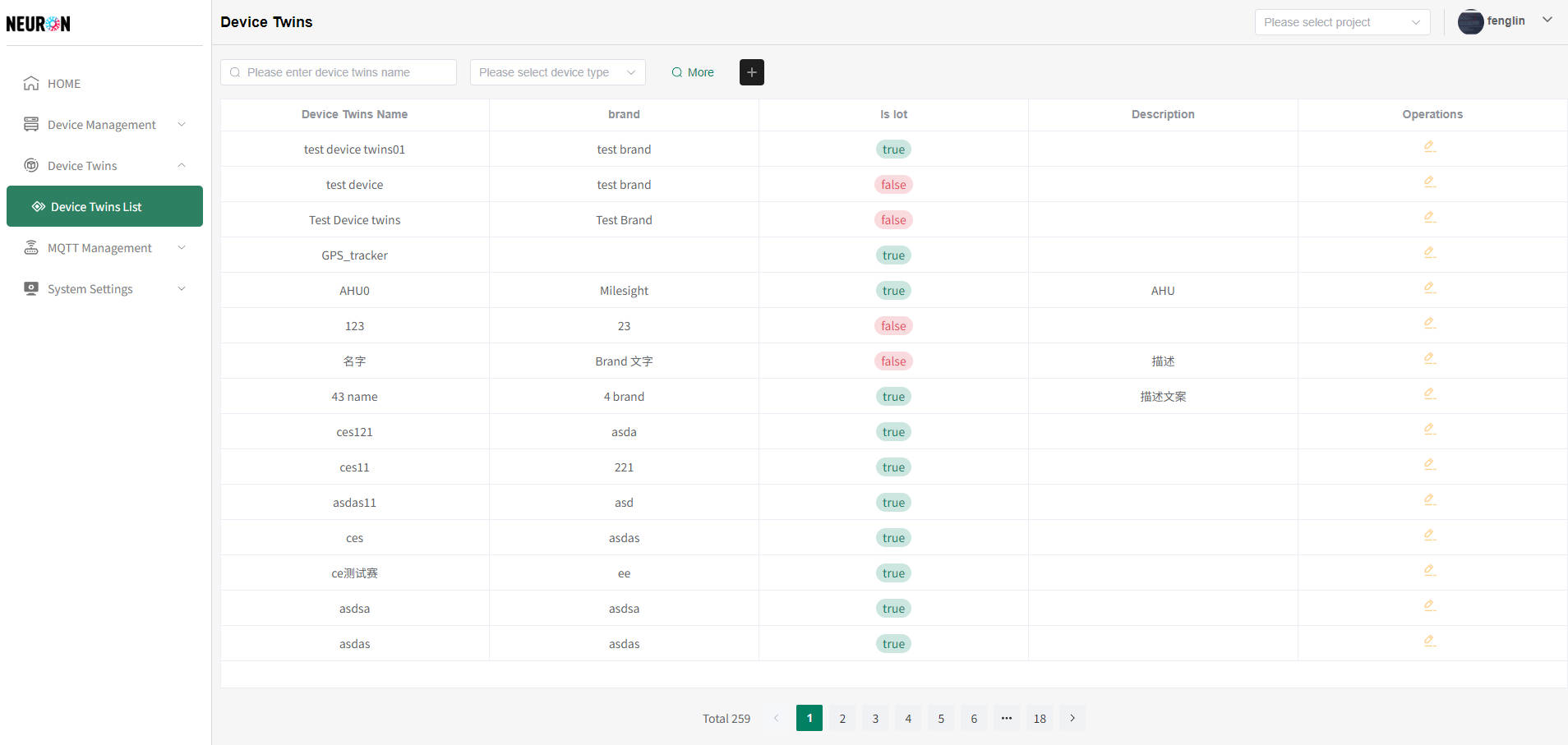
Select Access Method
Click the "Add" button on the Device Management List Page to enter the device access flow.
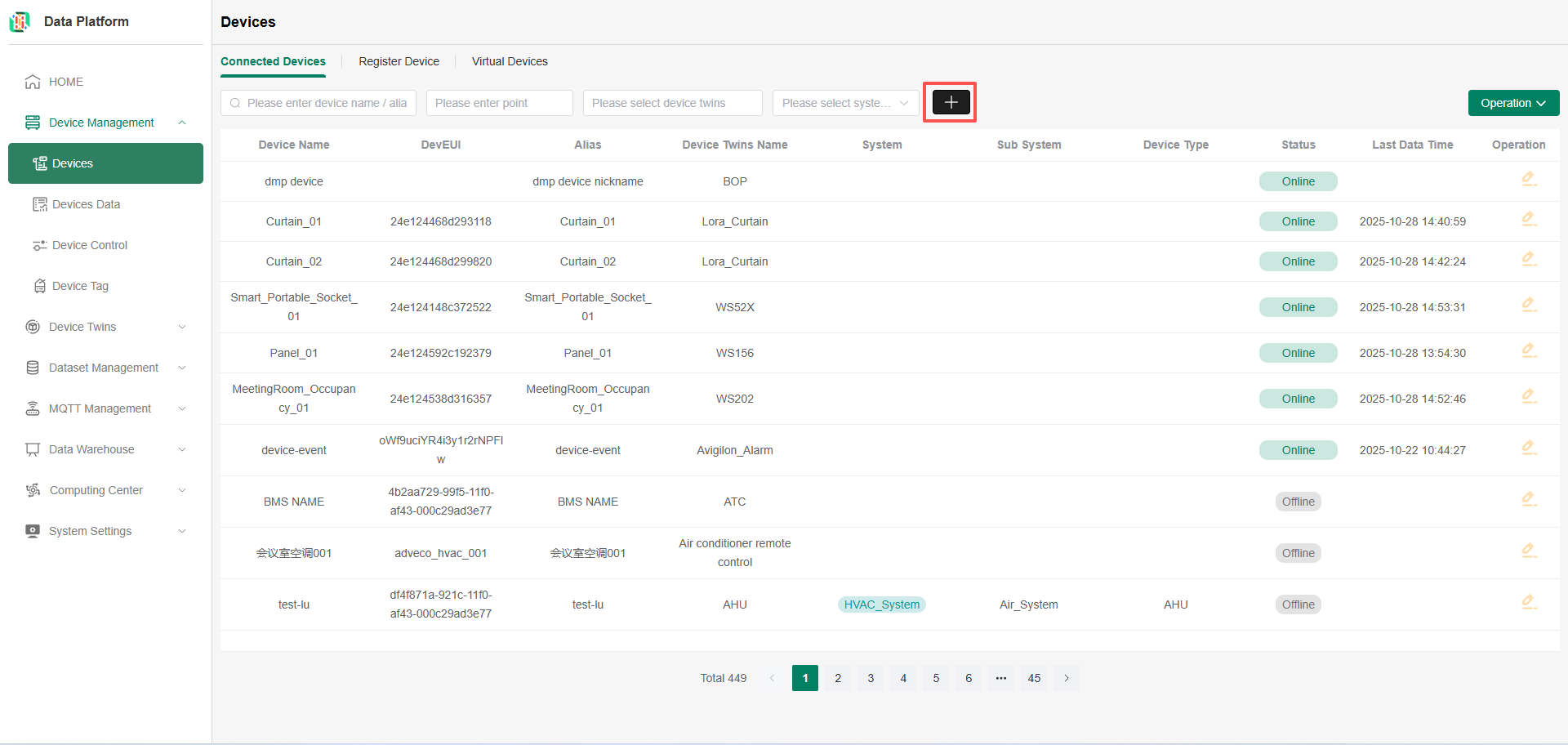
Select LoRaWAN as the access method, then click Next.
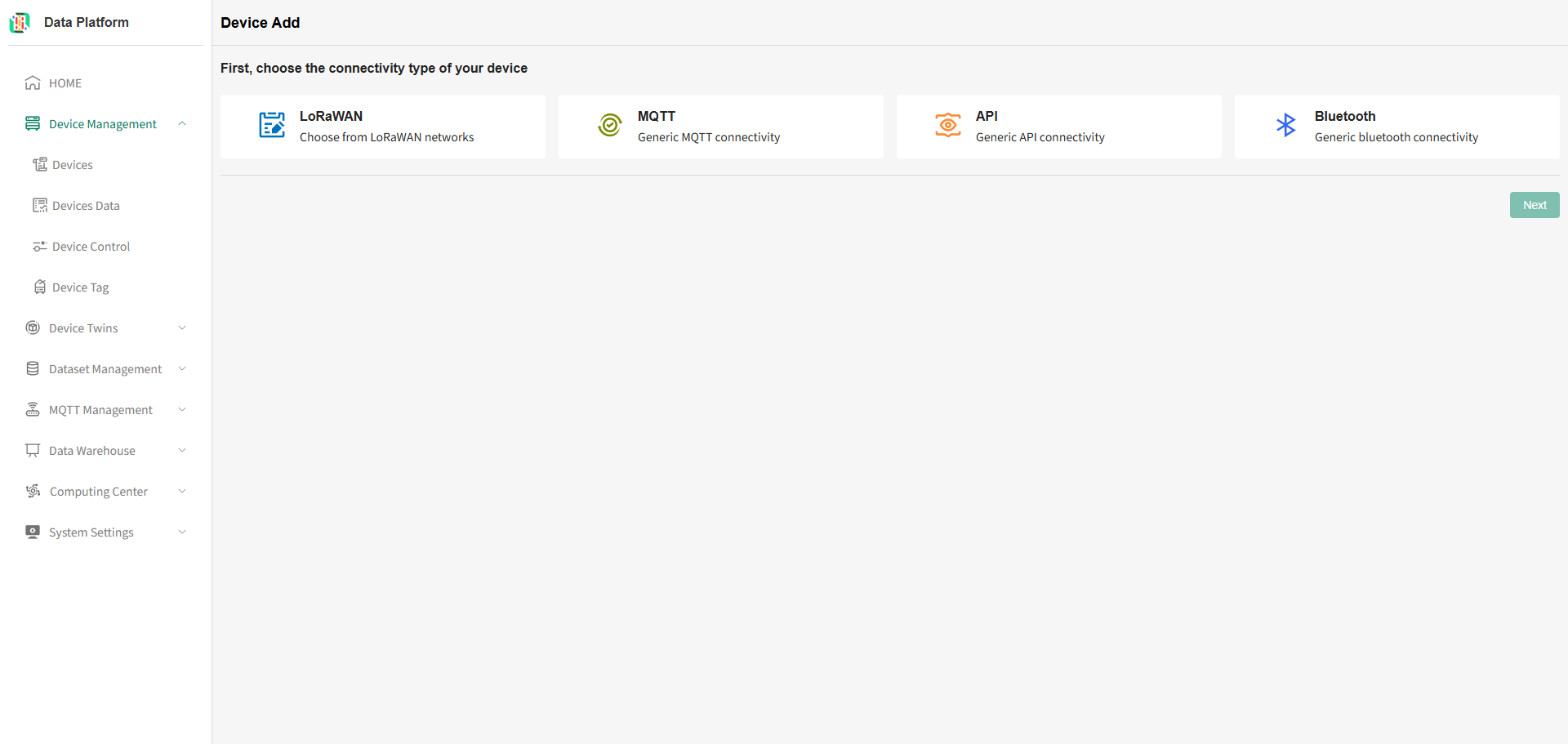
Select LoRaWAN NS
LoRaWAN NS (Network Server) is one of the core components in the LoRaWAN network, responsible for handling communication between end nodes (such as sensors, actuators) and the application server [e.g., ChirpStack, Actility, Netmore]. It acts as a hub for data transmission, managing key tasks such as end node connection, data forwarding, storage, and protocol conversion.
You can choose an Existing NS or create your own NS.
Select Existing LoRaWAN NS
When selecting, pay attention to the MQTT server information and the data access JSON format. The system will strictly subscribe to device data based on the MQTT server information and parse the data according to the NS's data access JSON. If they do not match, device access will fail.
Select the desired NS and click Next to proceed to device twins configuration.
Supports quick search by NS name or type.
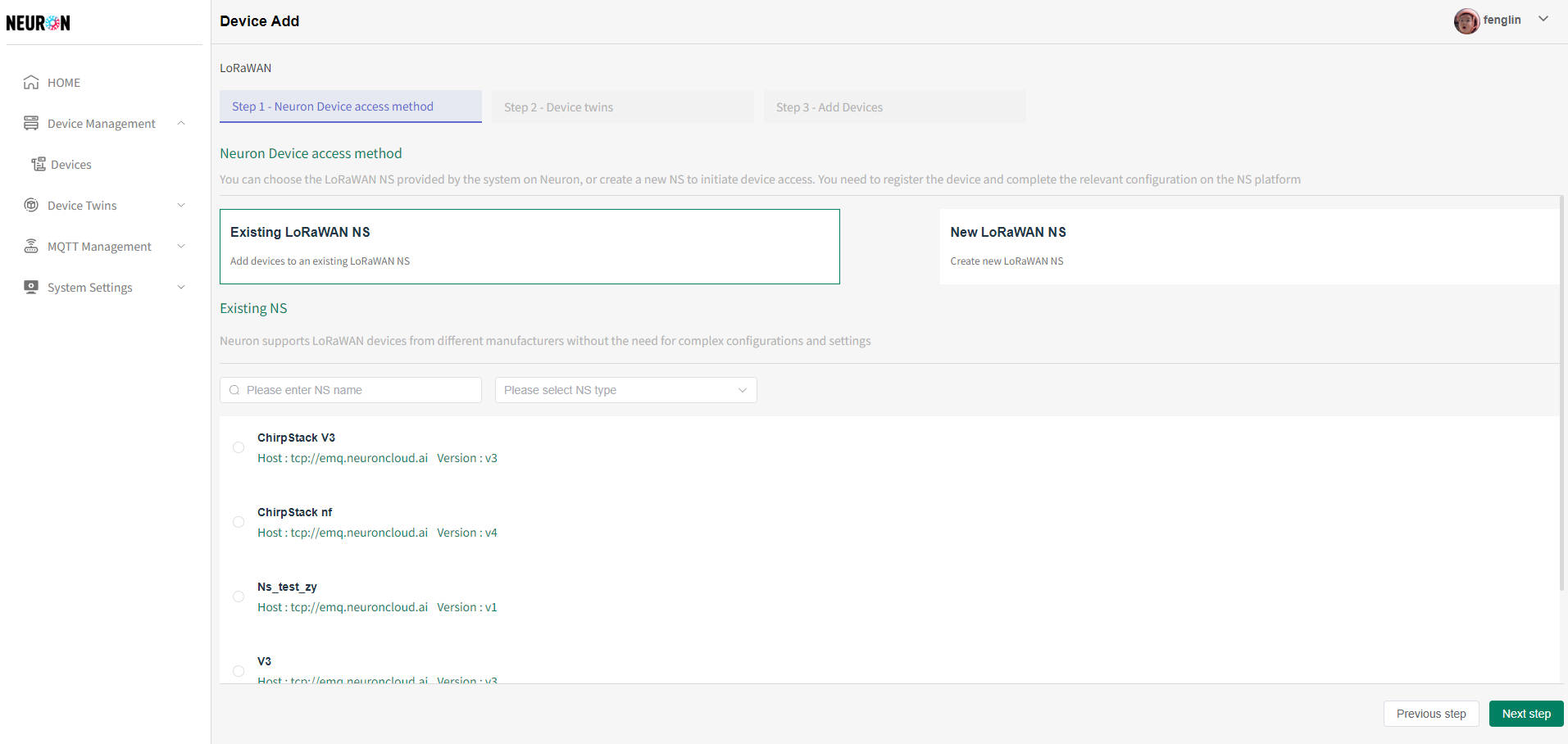
Add New LoRaWAN NS
Click the Add LoRaWAN NS button to enter the addition interface. Fill in your NS information.
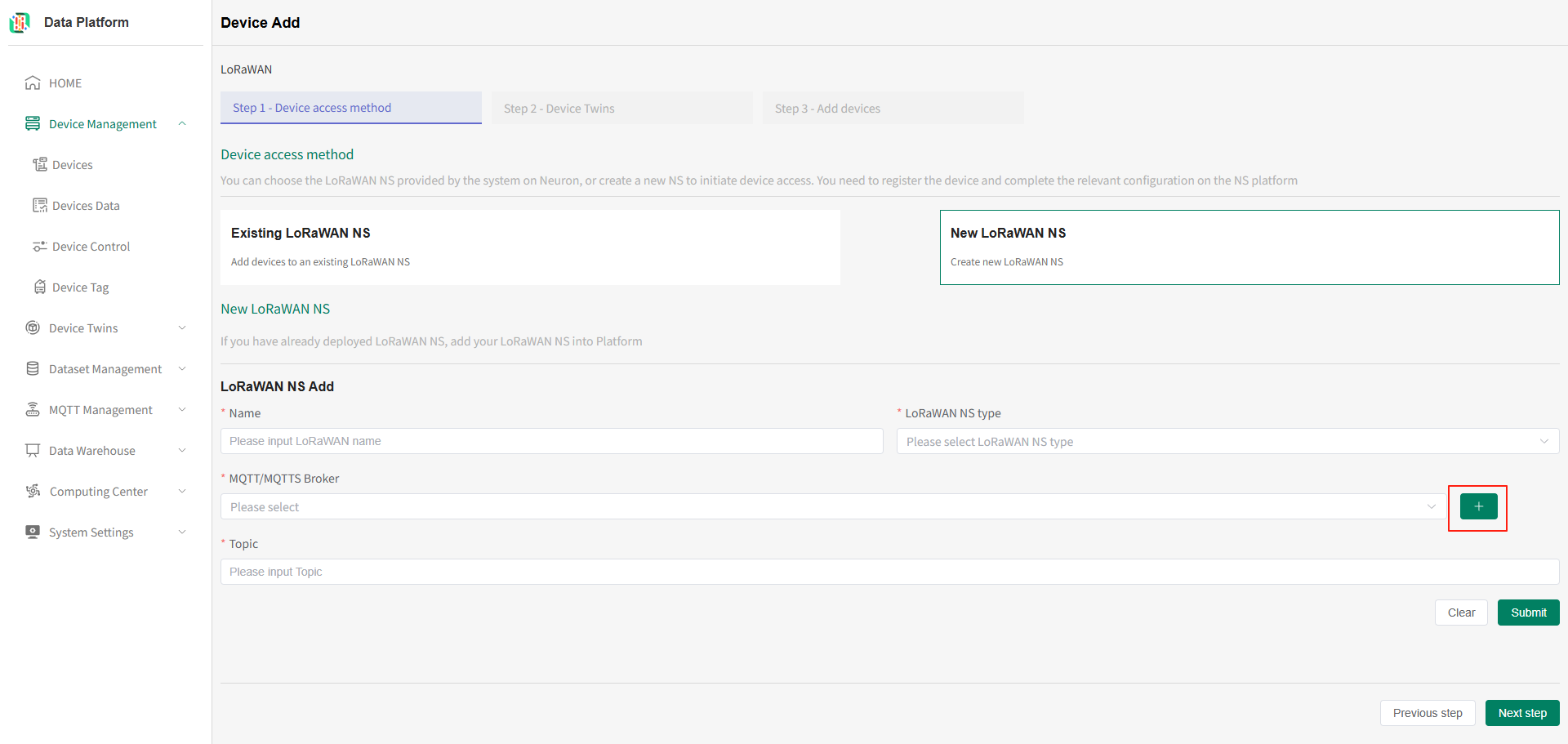
-
LoRaWAN NS Name: Must be unique. Required.
-
LoRaWAN NS Type: Select the connection type (e.g., ChirpStack / Actility / Netmore). Required.
- If accessing via the Netmore operator network, select Netmore.
- If accessing via the ChirpStack platform provided by the Neuron technical support team, select ChirpStack V4.
-
MQTT Broker (Server): Select the desired Broker (MQTT Server). Required.
-
If accessing via the ChirpStack platform provided by the Neuron technical support team, select Neuron SEA MQTT Server.
-
Add New: Enter the MQTT Server Name and the required Broker URL / Port; MQTT Username and Password (Optional, fill in if available).
Note: The page includes an SSL certificate configuration interface; the host prefix without a certificate is
tcp://, with a certificate it isssl://.
(1) Page without certificate: (2) Page with certificate (SSL configuration):
(2) Page with certificate (SSL configuration):


-
-
Topic: Required. Enter the Topic used when the device reports data (e.g., the Topic generated when accessing the device in the ChirpStack platform). Supports wildcard format (Wildcard format is not a complete, specific topic name but a topic filter used for subscription, which can match multiple specific topics, usually containing
+or#characters).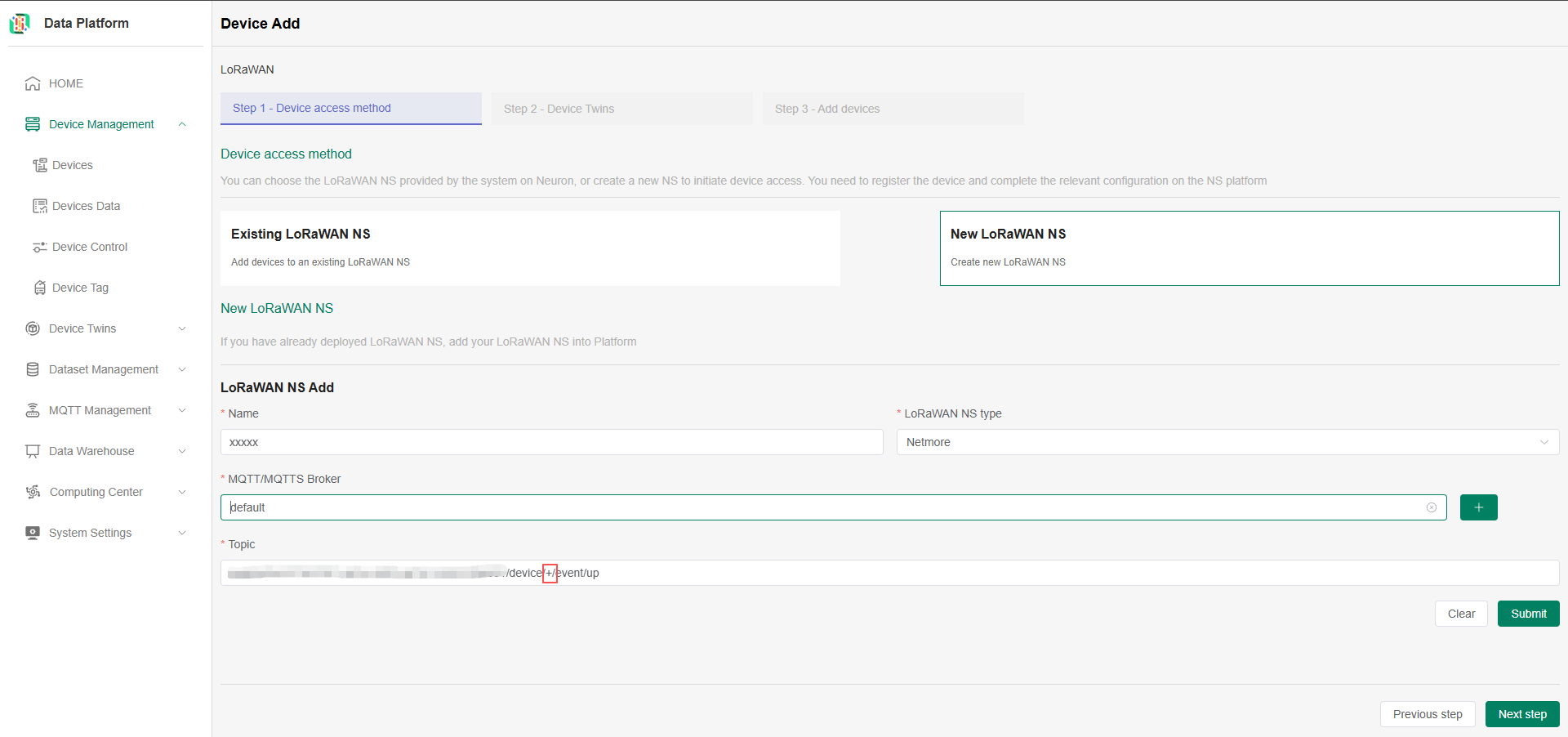
After filling in the LoRaWAN NS information, click the Submit button. The system will verify if the MQTT information connection is normal. If abnormal, the addition will fail. After successful connection, click Next to proceed to device twins configuration.
Select Device Twins
Select Existing Device Twins
Supports quick search by device twins name/type/brand.
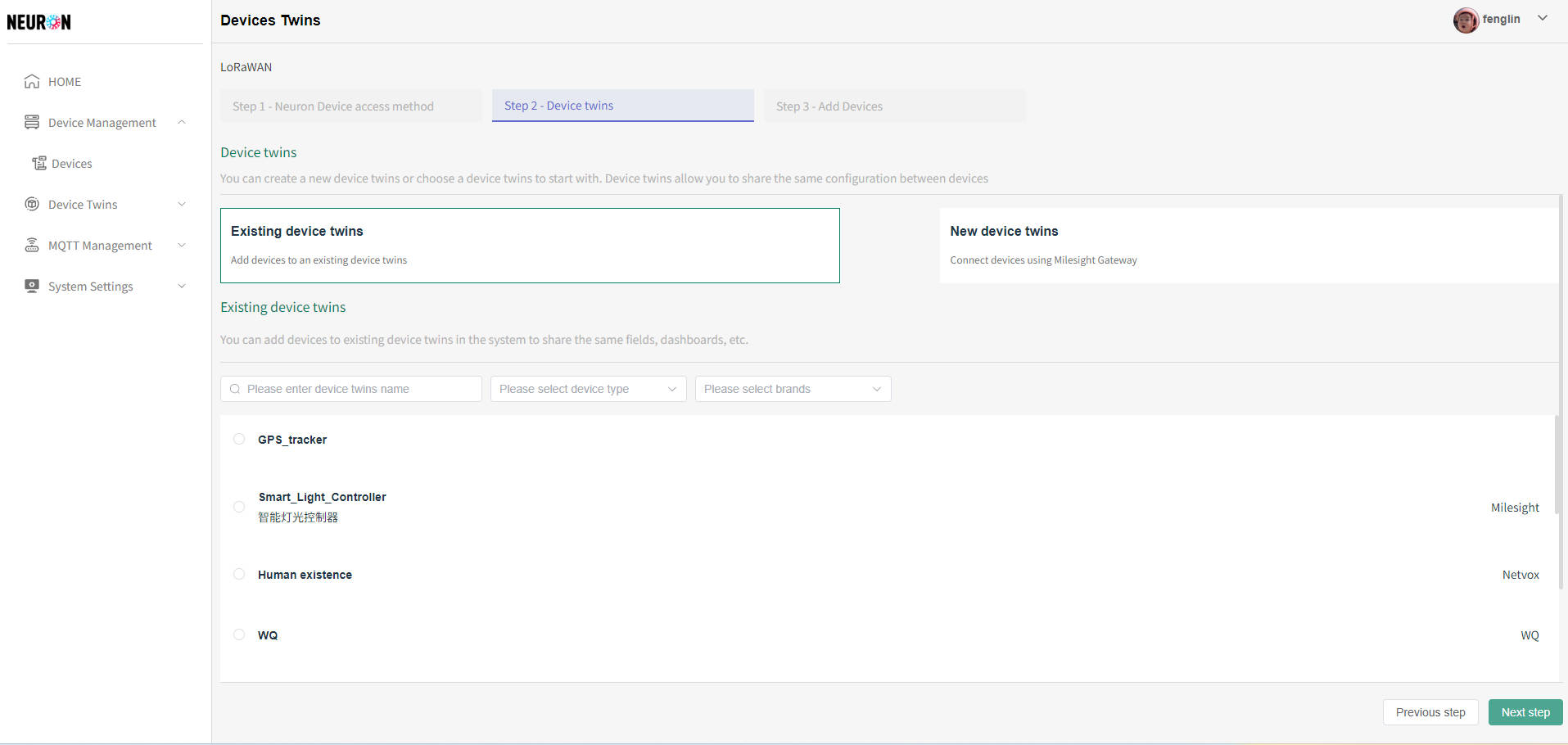
Add New Device Twins
Click the Add Device Twins button to enter the addition interface. After filling in the device twins information, click the "Submit" button to create the device twins.
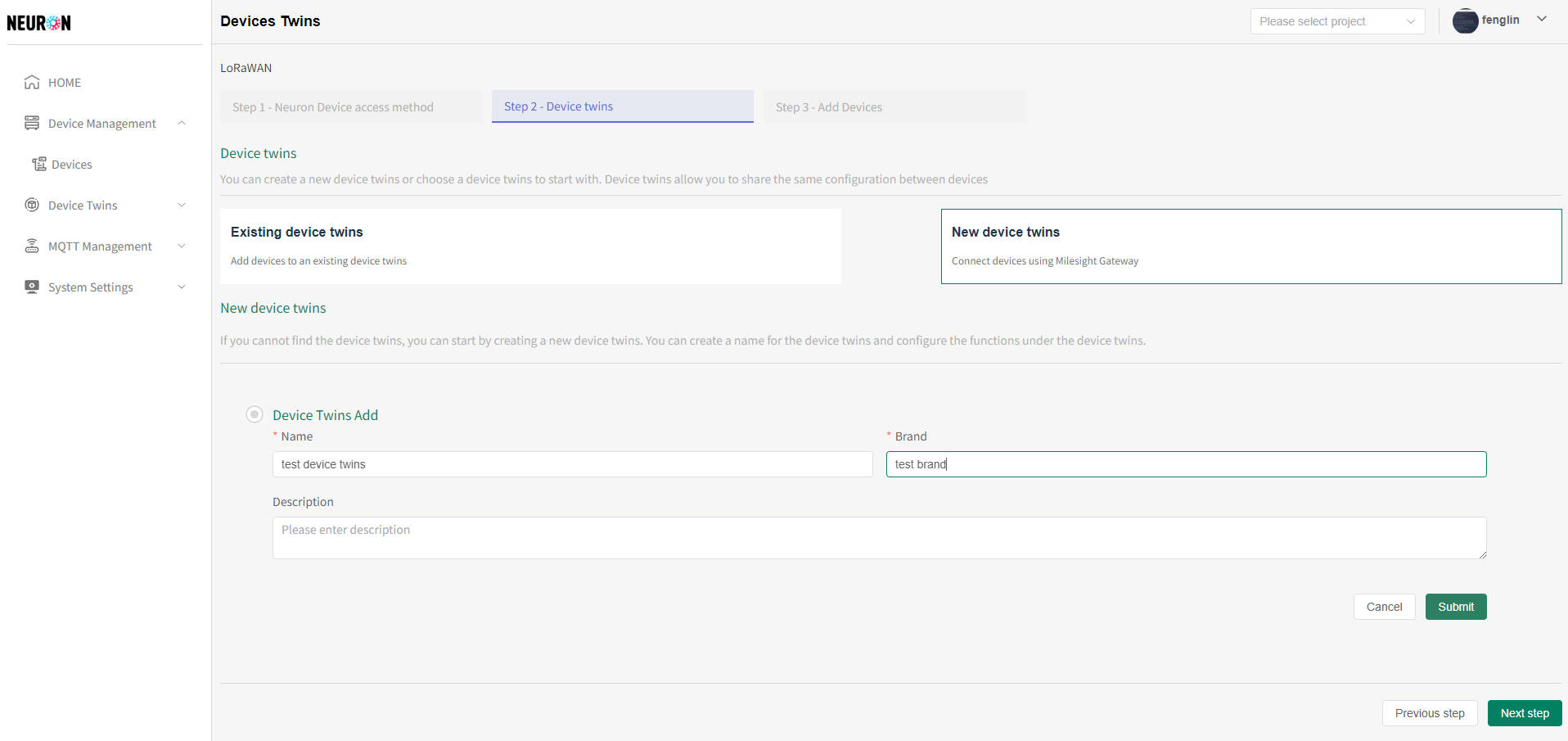
Note: The device twins name must be unique. The system verifies name uniqueness upon submission; adding will fail if the name is duplicated.
Configure Function Type (Point)
After successfully creating the device twins, you can directly configure the Function Types under this device twins.
Click the "+" button indicated in the figure to enter the Function Type addition page.
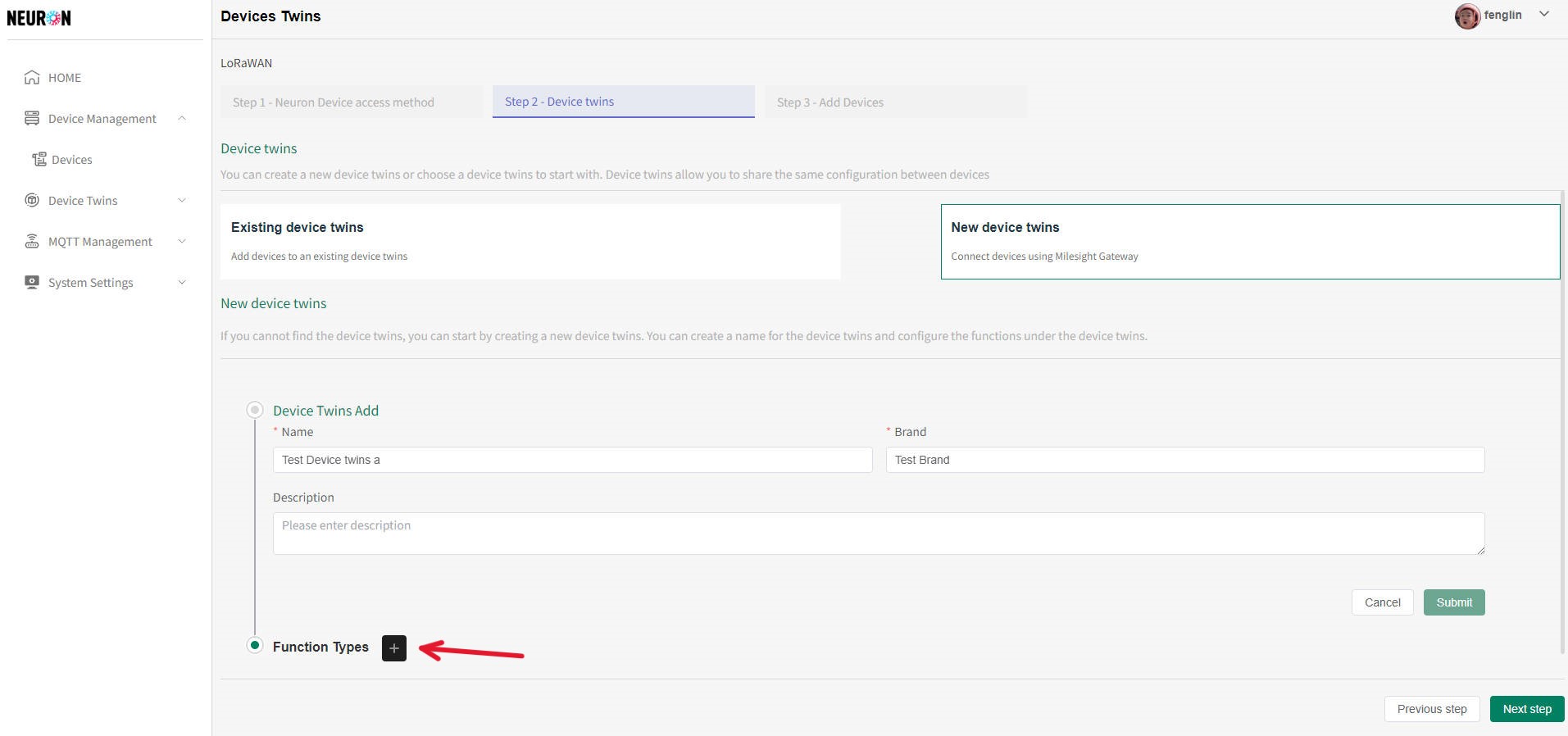
Click the Function type input box to Select/Add a Function type. For other configuration descriptions, see 【Device Twins Management】.
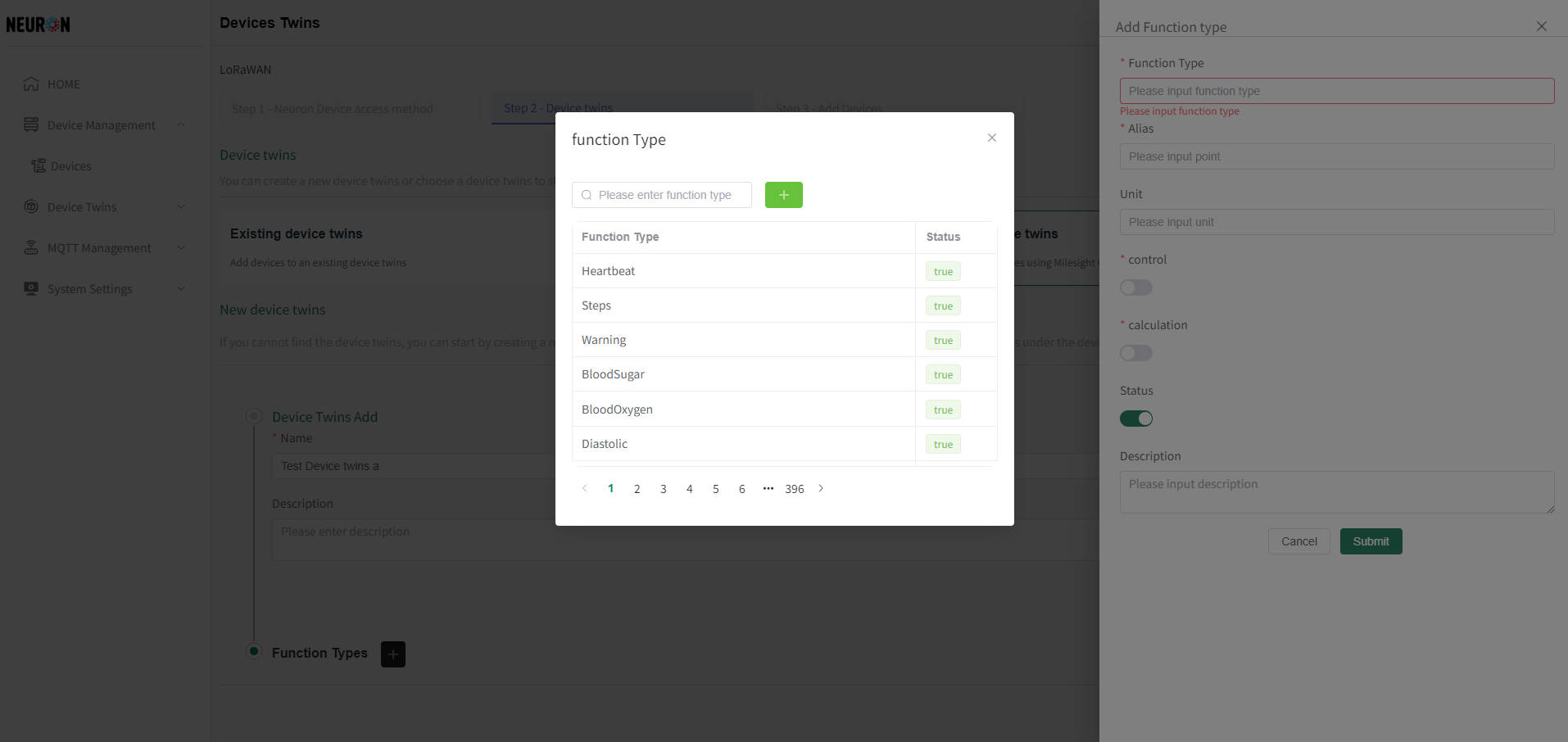
If the device twins has multiple Function Types, repeat the steps above to add multiple Function Types. After configuration is complete, click Next to proceed to the device registration page.
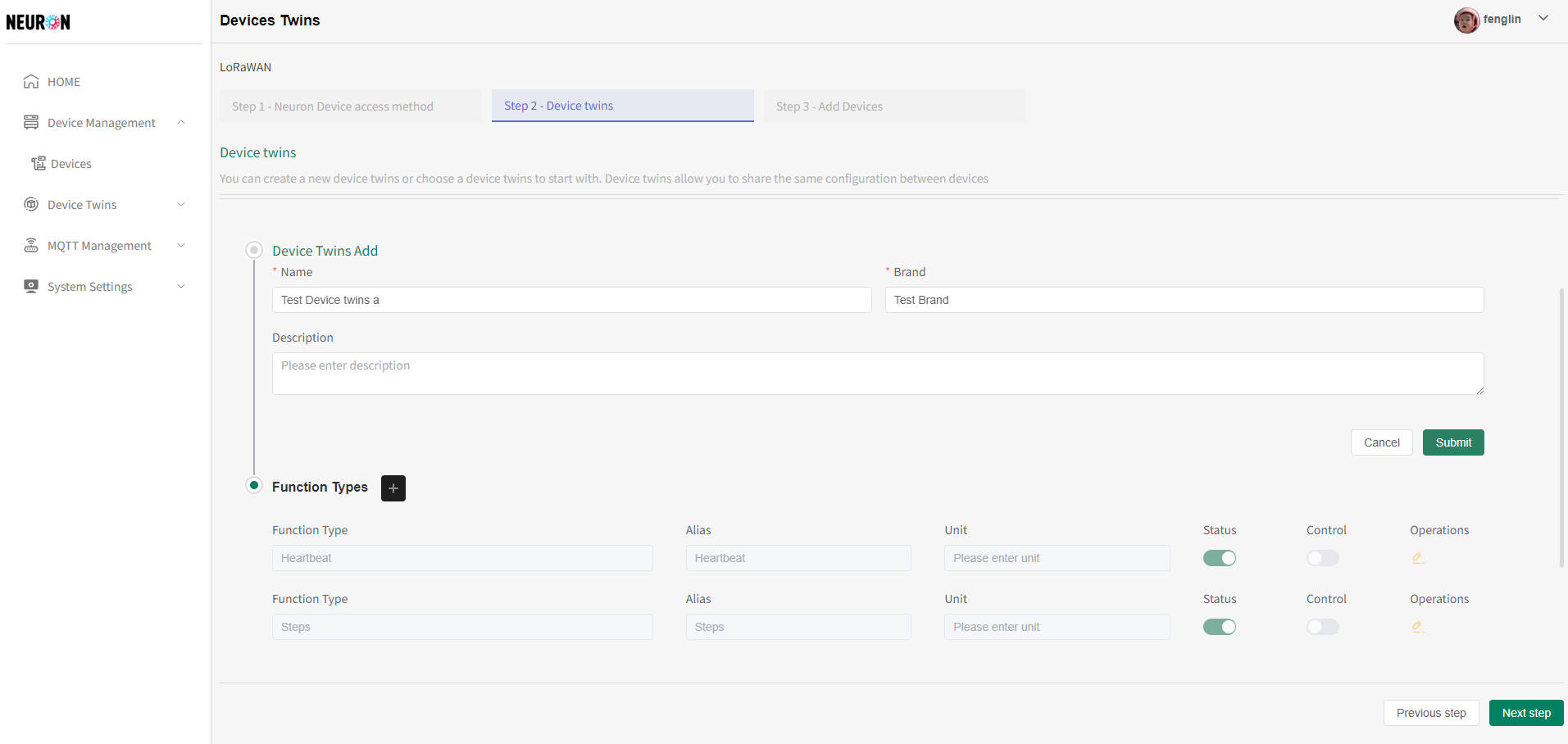
Device Registration
Supports two input methods: Online Editing or Download Excel for Batch Entry.
Bind Device to Platform Project
Before registering the device, please select the project to which the device belongs. Click the Project dropdown to select an existing project. If no project has been created yet, please create one first. For operations, see 【Create Project】.
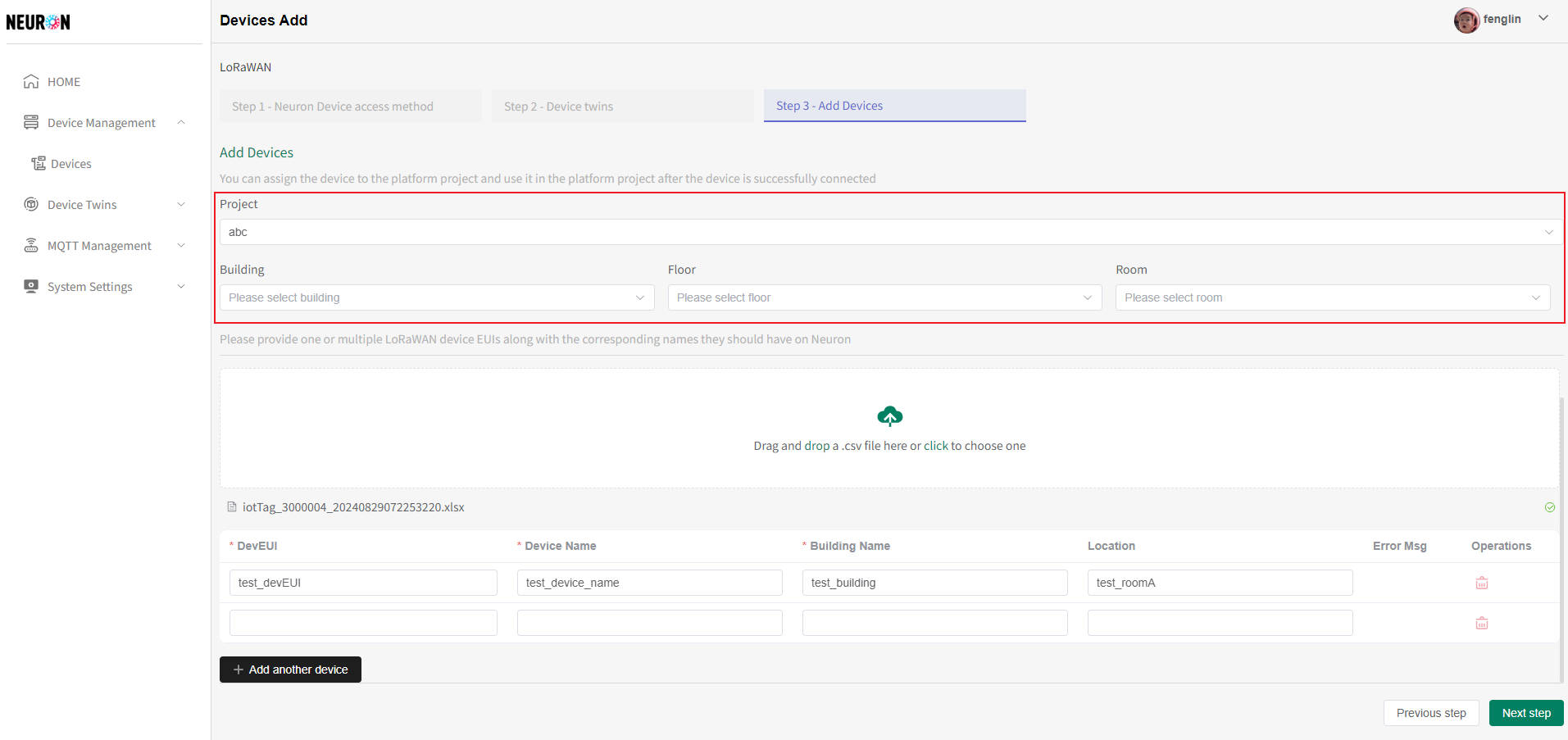
Batch Excel
Operation steps: Download Template -> Fill Excel -> Upload Excel -> If there are errors, perform online editing -> Click Next to complete device registration.
Download Template
On the device registration page, click the area in the red box in the figure below to download the template file.
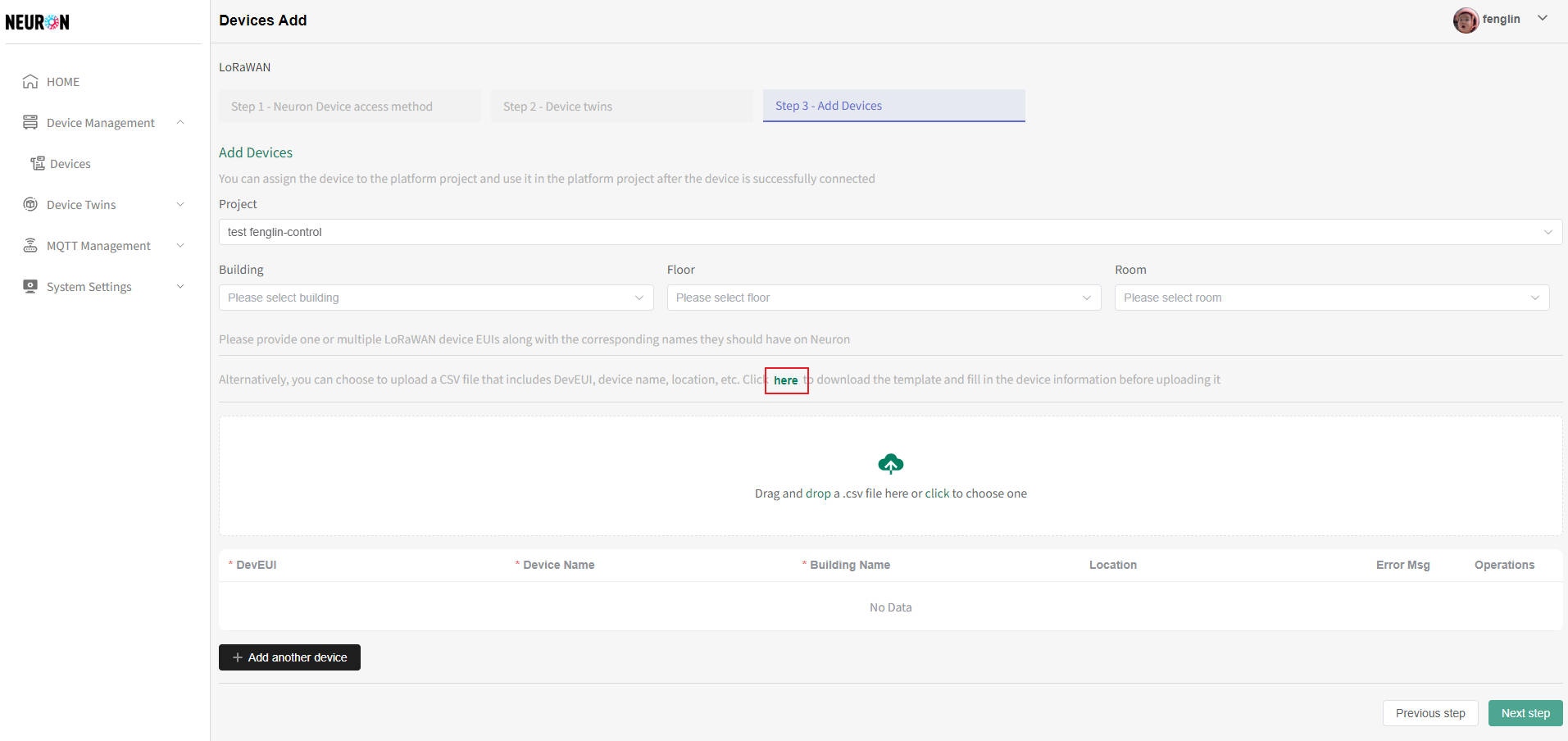
Fill Excel
Fill the device information that needs to be entered into the Excel template.
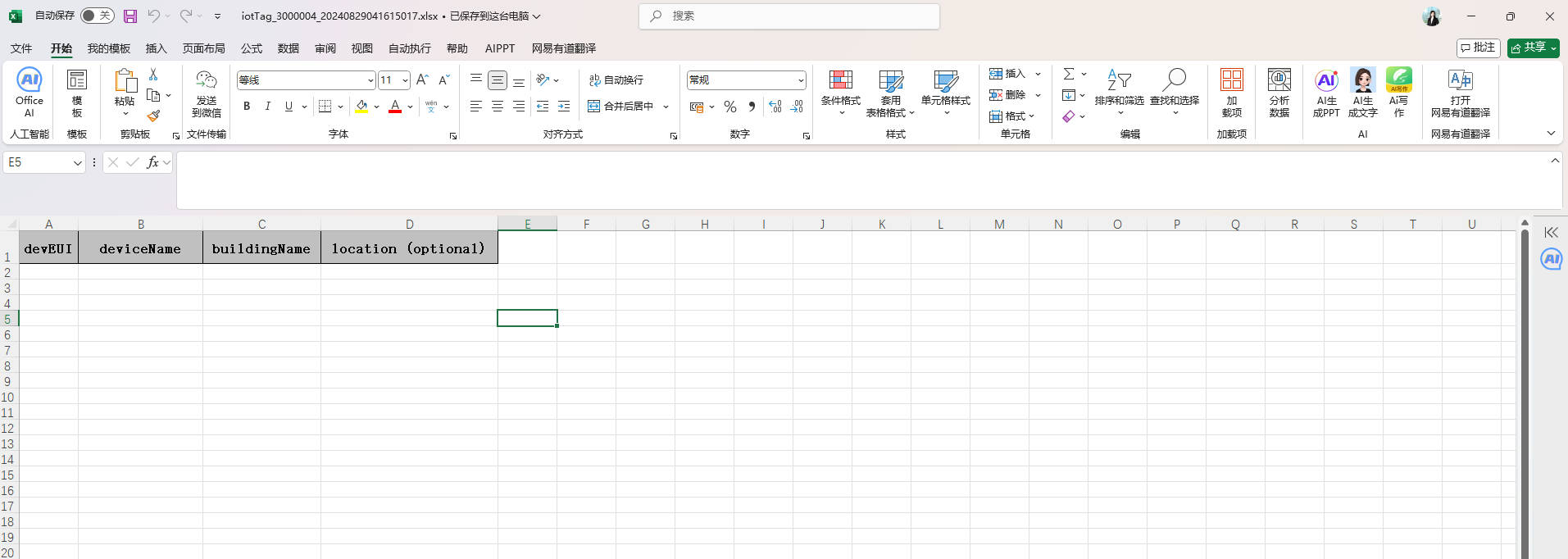
- DevEUI: The unique identifier for the IoT device. Usually, fill in the DevEUI on the device. Required;
- deviceName: Device name, must be unique. Required;
- buildingName: Building location information. Required;
- location: Device location. Optional.
Upload Excel
Click/Drag the area in the red box in the figure below to upload the filled Excel file to the platform. The uploaded device information will be displayed in the online table. If there are errors, you can continue to add, delete, or modify.
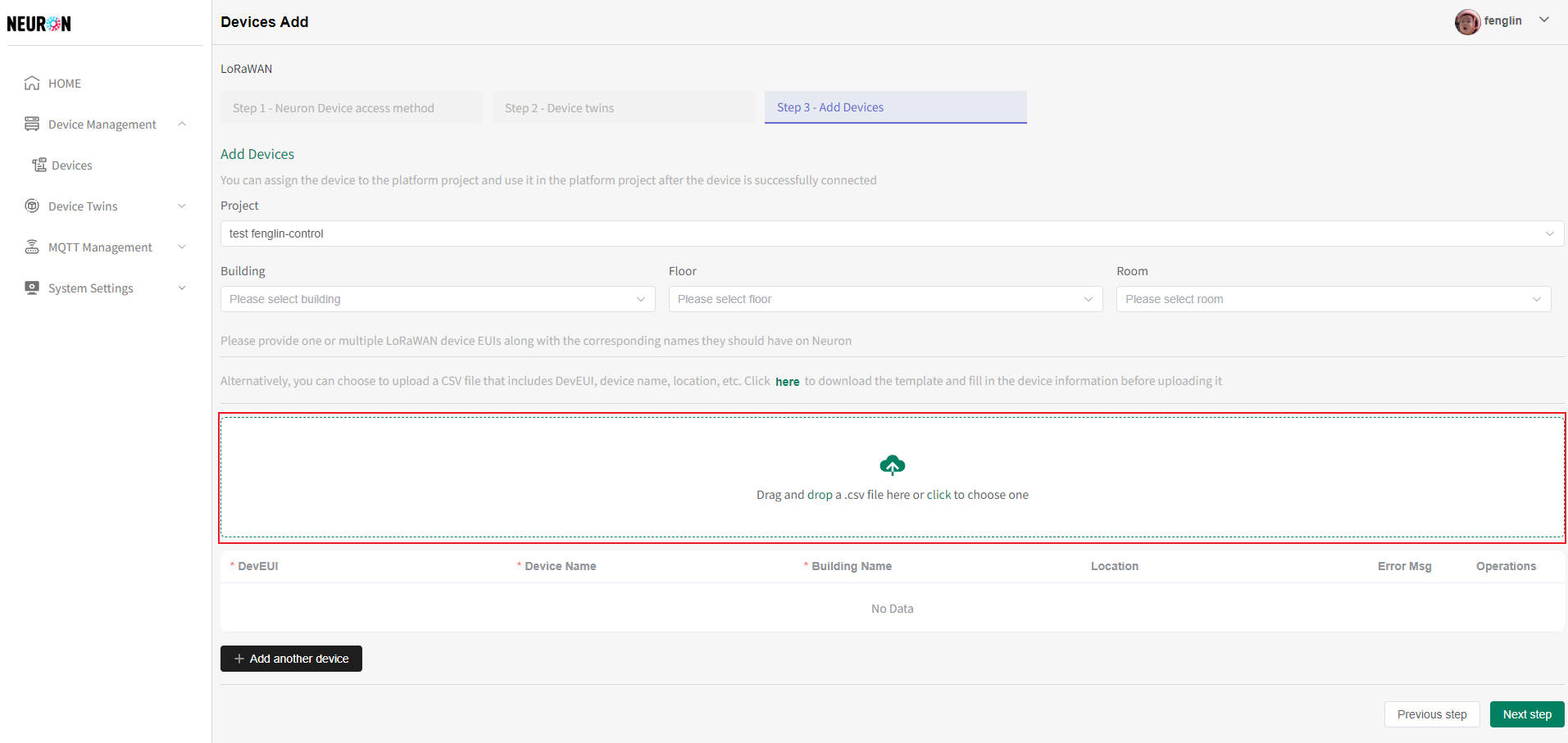
Online Editing
Fill in the device information on the page. Click the Add button to add a new row and continue entering device information.
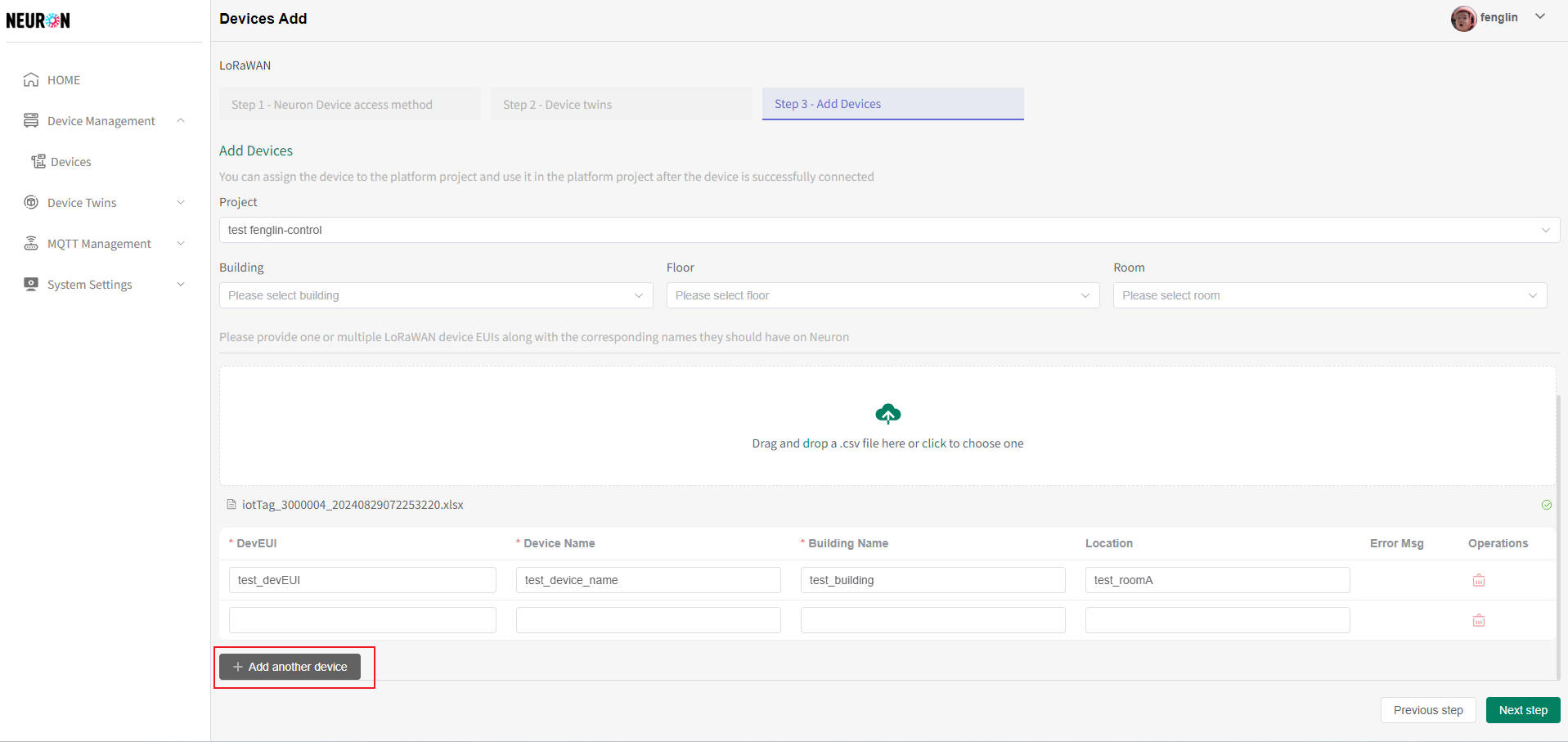
After completing the device information, click the Submit button. A confirmation window will appear. Confirm to complete device registration.
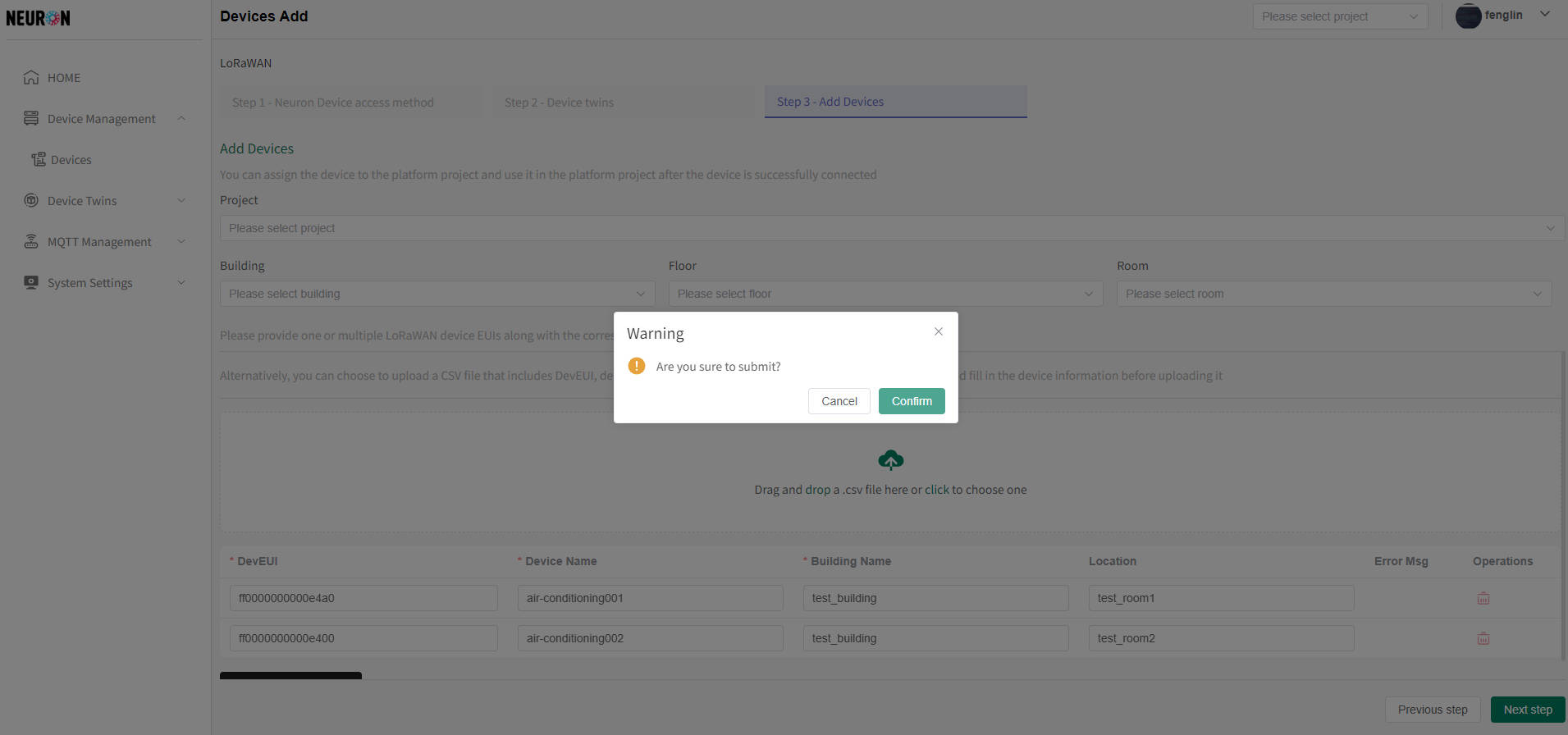
After registration is complete, it will jump to the Device Registration Page (the red box in the figure below shows the newly registered device data). Once the platform subscribes to standardized reported data, the device is successfully accessed. After successful device registration, you can view device information and data in the device management interface. For specific operations, see 【Device Management】.
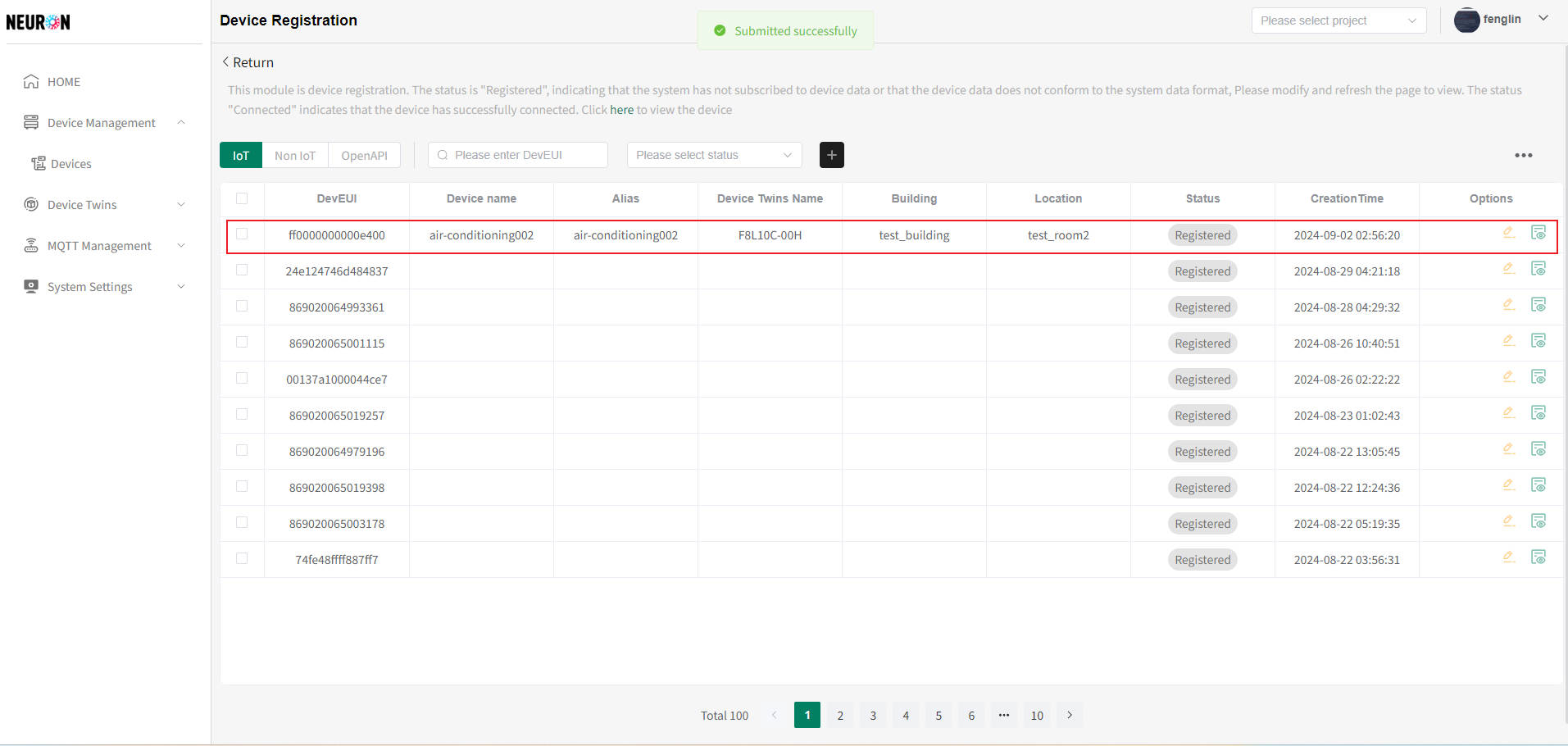
Note: Successful device registration means it has been recorded in the Neuron platform with a status of Registered, but real-time data is not yet connected. After the system subscribes to the reported data based on the configured parameters, cleanses it, and stores it in the database, the device status is updated to Connected and appears in the device list.